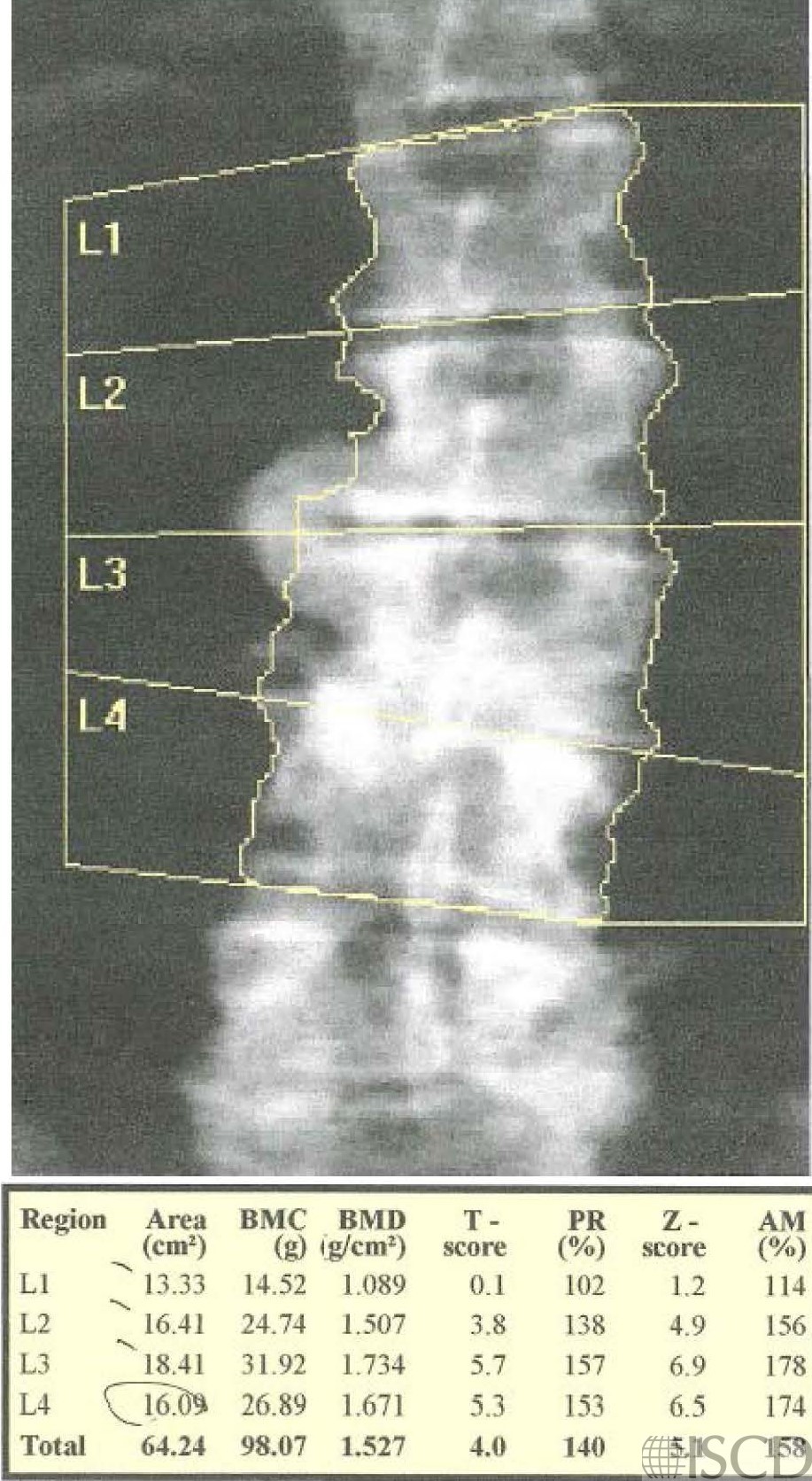Bridging Osteophytes
There is a bridging osteophyte at L2-L3 on the right and there are degenerative changes in this Hologic lumbar spine DXA. Notice the elevated Z-scores and the discordance in bone mineral density in the lumbar spine.

A bridging osteophyte is present at L2-L3 and there are degenerative changes in the lumbar spine in this Hologic spine scan. The bone mineral density is overestimated in the lumbar spine. Diffuse idiopathic skeletal hyperostosis (DISH) is a condition where there are flowing ossifications in the spine. Generally, the diagnosis of DISH requires the bridging of four adjacent vertebral bodies with new bone, without degenerative changes in the sacroiliac or apophyseal joints.
Sarah L Morgan, MD, RD, CCD, The University of Alabama at Birmingham
Schwartz, J.B. and M. Rackson, Diffuse idiopathic skeletal hyperostosis causes artificially elevated lumbar bone mineral density measured by dual X-ray absorptiometry. J Clin Densitom, 2001. 4(4): p. 385-8.
Kuperus, J.S., et al., Classification criteria for diffuse idiopathic skeletal hyperostosis: a lack of consensus. Rheumatology (Oxford), 2017.
Di Franco, M., et al., Study of peripheral bone mineral density in patients with diffuse idiopathic skeletal hyperostosis. Clin Rheumatol, 2000. 19(3): p. 188-92.
Diederichs, G., et al., Diffuse idiopathic skeletal hyperostosis (DISH): relation to vertebral fractures and bone density. Osteoporos Int, 2011. 22(6): p. 1789-97.
Eser, P., et al., Patients with diffuse idiopathic skeletal hyperostosis do not have increased peripheral bone mineral density and geometry. Rheumatology (Oxford), 2010. 49(5): p. 977-81.
Sahin, G., et al., Study of axial bone mineral density in postmenopausal women with diffuse idiopathic skeletal hyperostosis related to type 2 diabetes mellitus. J Womens Health (Larchmt), 2002. 11(9): p. 801-4.
Westerveld, L.A., et al., The influence of diffuse idiopathic skeletal hyperostosis on bone mineral density measurements of the spine. Rheumatology (Oxford), 2009. 48(9): p. 1133-6.
Whyte MP. Misinterpretation of osteodensitometry with high bone density. BMC Z >= 2.5 is not “normal”. J Clin Densitom 2005 8(1): 1-6.